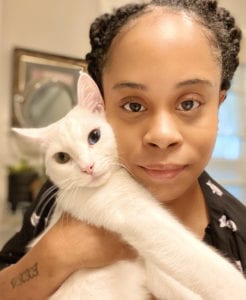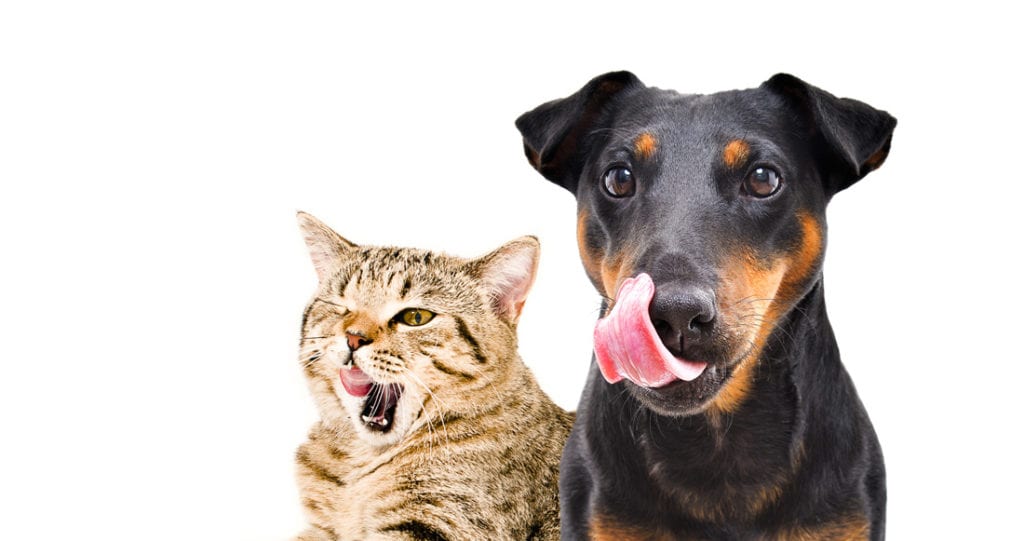TIPS TO SELECT THE RIGHT NUTRITION FOR CATS AND CANINES
Ninety-five percent of U.S. pet owners consider their pets to be family, according to a recent survey by The Harris Poll, a global market research firm. Naturally, we want our family members to be healthy, so it’s no surprise that pet nutrition and specialty foods are big business. But when it comes to feeding your feline friend or canine companion, do you know what to look for in their food? We talked to the experts to get the lowdown.
DINNER FOR DOGS

Dogs are omnivores, meaning they eat food of both plant and animal origin. But when you select a food for your dog, protein is the most important ingredient to consider.
Just like on human food labels, ingredients in pet food are listed in order of quantity. So if the first item listed is chicken, for example, then you know the food’s chief ingredient is chicken. However, labels can be misleading due to a practice known as ingredient splicing.
To combine the components of a dry food, binders must be used. Binders are grains or starches, such as rice, lentils and chickpeas, and they’re frequently the next ingredient listed on a label. But often pet foods can be deceiving because manufacturers will list multiple binders.
“Probably the third, fourth, fifth and sometimes even sixth ingredient listed on your ingredient panel is the binder,” says nutritionist Karena Richardson, manager of The Whole Dog Market, which has a Sandy Springs location. “If there are more than three binders or starchy foods, you have more starch than protein.”
And while you may have heard that you should feed your dog the same food for life, Richardson says this is a myth. “Do we want to eat the same food for our entire lives?” she asks. “Would we be healthy if we only ate chicken every day?”
If pet owners aren’t comfortable switching brands, Richardson offers another solution to introduce variety. “Just rotate the flavor or protein. One month, do a bag of pork. The next month, do a bag of chicken,” she says.
KIBBLE FOR CATS

Cats are obligate carnivores, which means they derive energy and nutrient requirements mostly from meat. However, many cat foods contain carbohydrates such as corn, wheat and rice that they don’t necessarily need. So it’s important to look for foods that contain protein as the top ingredient.
“Look for labels that list one main protein ingredient like chicken, turkey or beef,” says Brookhaven resident Tiffanie McCullough, a veterinary technician who consults on feline nutrition. “These recipes must contain 95% of the listed single protein per American Association of Feed Controls guidelines. Second, if the label says ‘dinner’ or ‘buffet,’ then that percentage drops down to 25%, but can be no more than 95%.”
Because of their carnivore status, misconceptions about the feline diet abound. “I think the biggest misconception is that [cats] should only be fed a raw diet,” McCullough says. “While raw may have benefits, there isn’t enough scientific backing to prove it is the best for all cats. Another misconception is that all cats should eat grain-free. Recent studies [including a 2018 FDA report] show that a grain-free diet has been linked to heart disease.”
Finally, a common question among cat owners is whether wet food or dry food is better for cats. While there’s not a consensus among vets, wet food can help felines stay hydrated and can be especially beneficial for cats prone to urinary infections.
As always, if you have questions about your pet’s diet, consult a veterinarian or nutritionist.
SWITCH IT UP
If you decide to change up your pet’s diet, do so gradually. Mix a bit of the new food in with the previous food, and slowly increase the amount of the new food over time until your cat or dog is eating the new food only. This helps your pet adjust to the new food and prevent digestive issues.
DETAILS
The Whole Dog Market
thewholedogmarket.com
Tiffanie McCullough
linktr.ee/tifftalkscats
Writer and pet columnist at Simply Buckhead. Author, AdventureCats.org founder, total cat lady.













